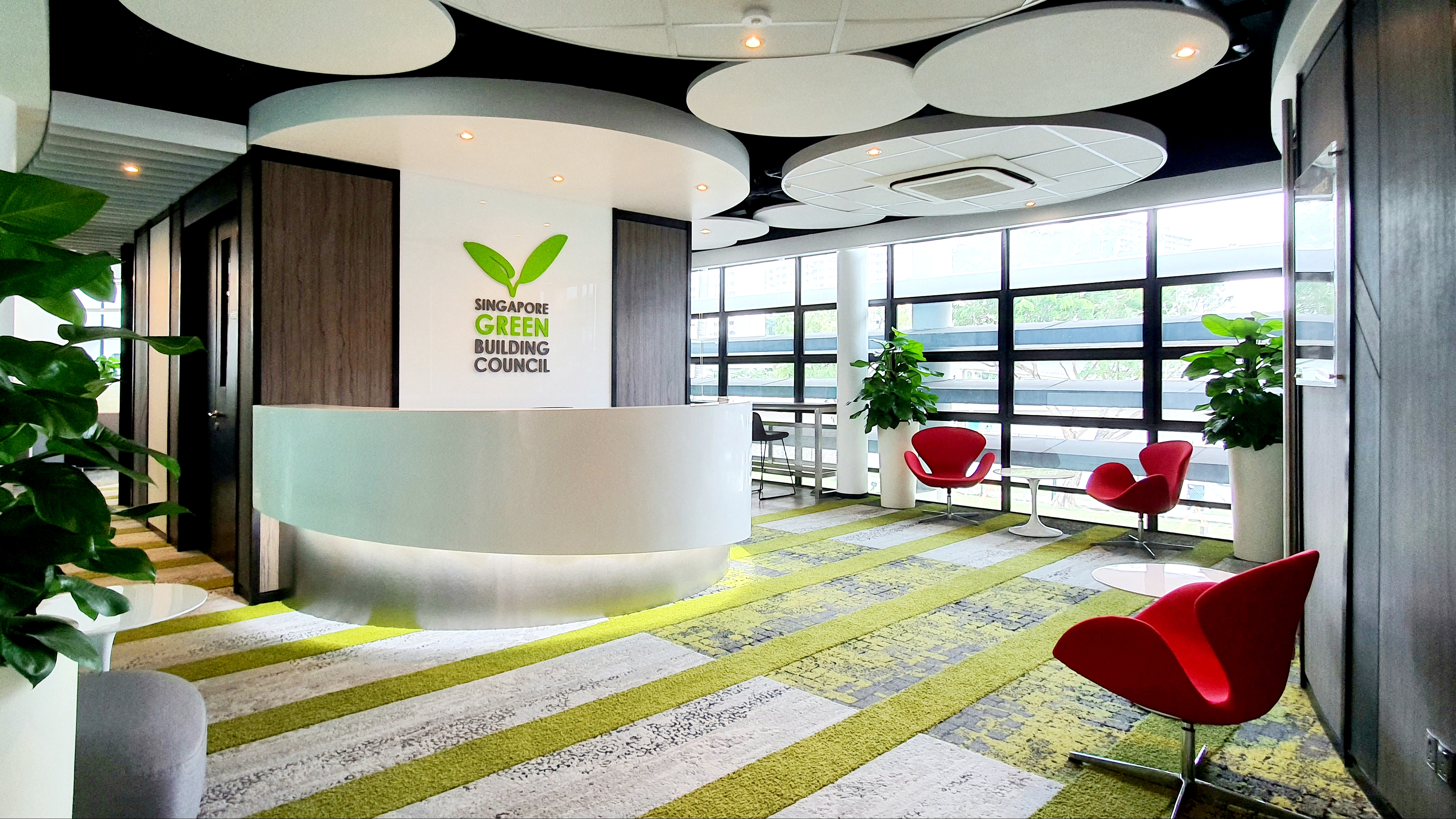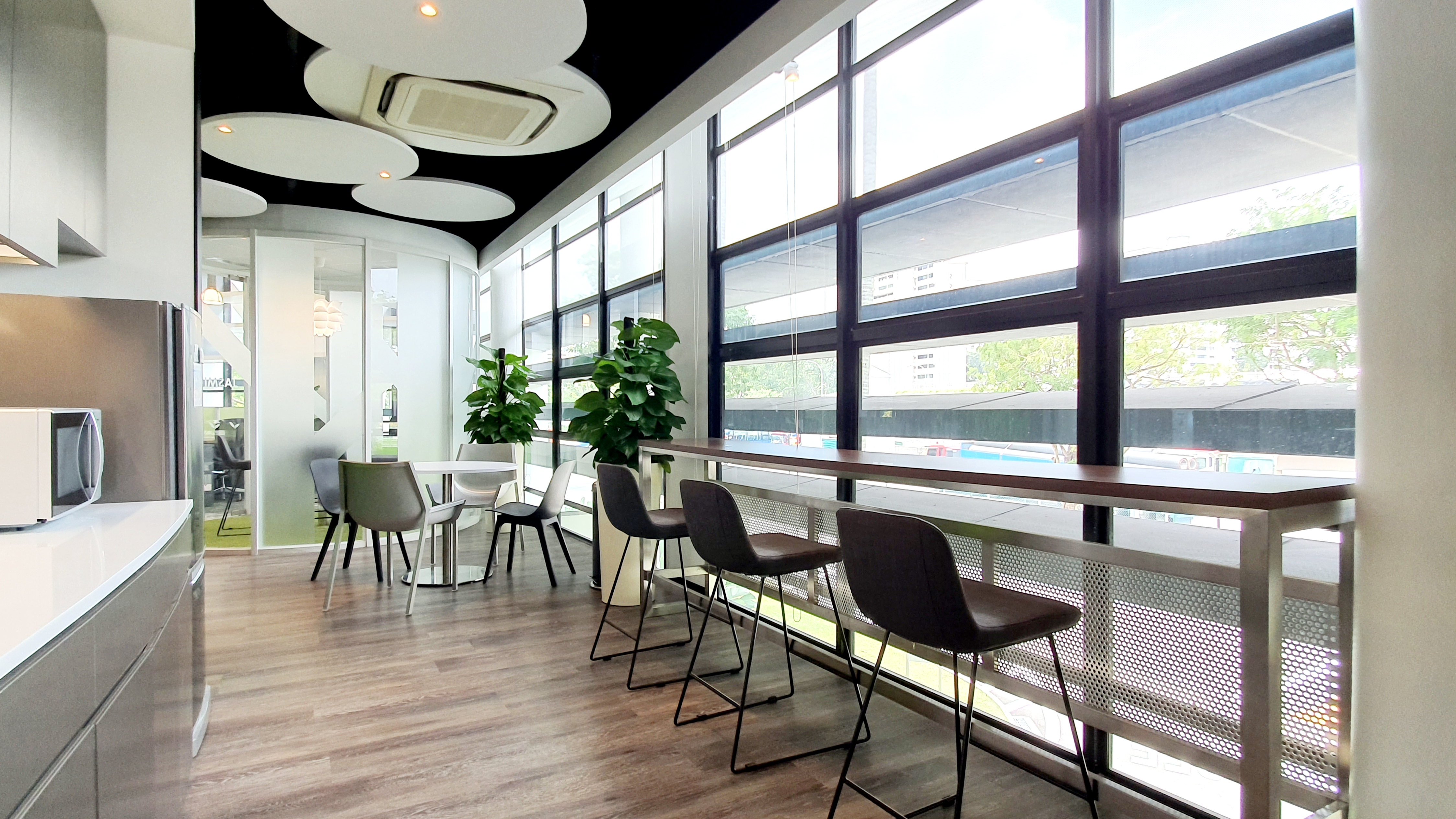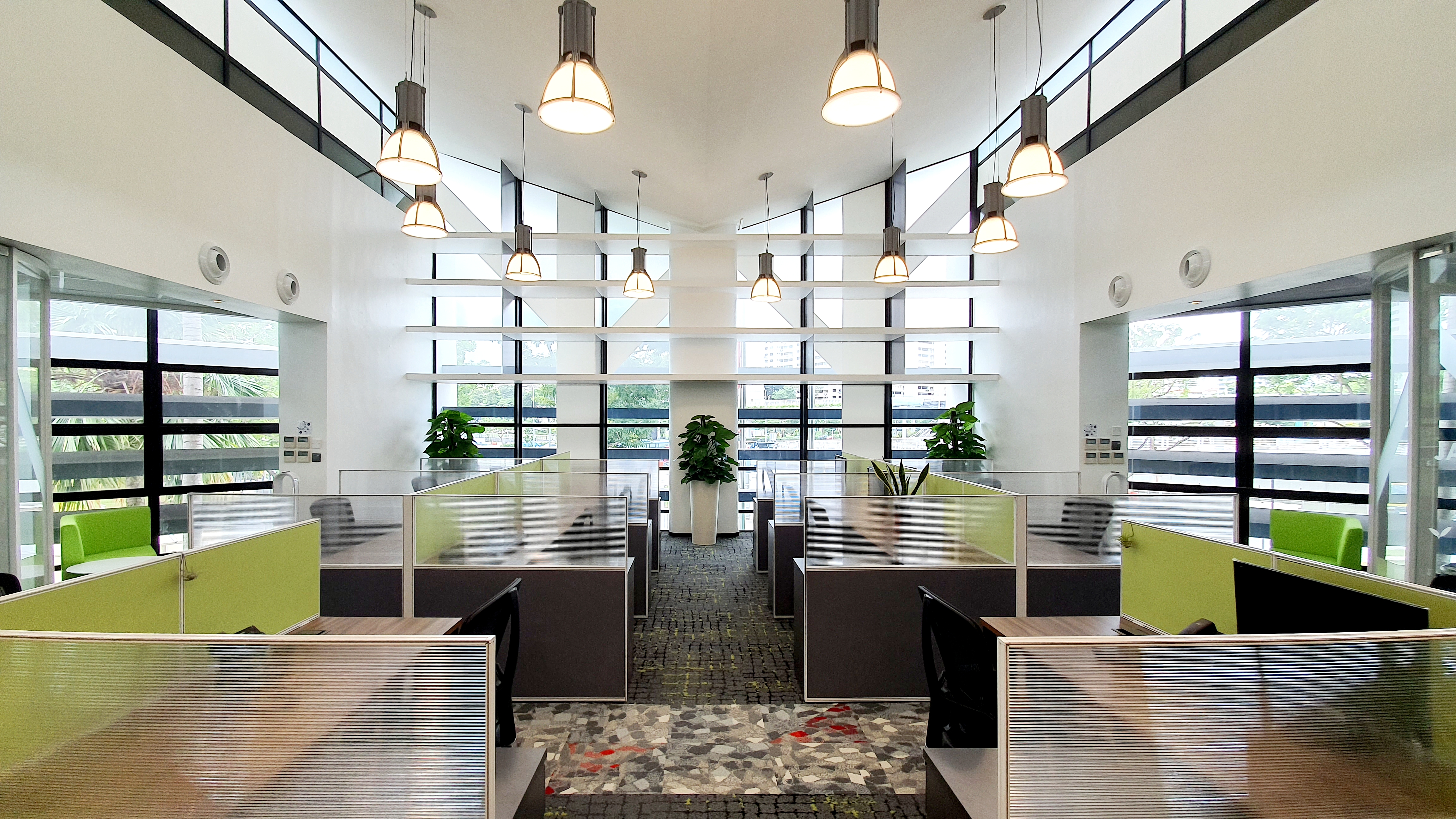The sun is shining bright in the sky, bathing the office space with natural light. The artificial lighting in the building dims and turns off, a response triggered by daylight sensors near its windows.
“The daylight sensors that we put in these areas at the Singapore Green Building Council (SGBC) Office are able to detect the daylight levels within the space, and respond by shutting down any excess artificial lighting,” explained Ar Clifford Chua, Associate Director at CIAP Architects. “In so doing, we achieve energy savings.”
A seasoned architect with over 20 years of experience, he has been involved in a wide range of development projects in Singapore. In addition to practising architecture, he serves as a part-time lecturer and guest design critic at the NUS Department of Architecture, School of Design and Environment, and also contributes to the SGBC Publications Committee.
“I was green before it was trendy to be so,” he revealed. After completing his Master’s Degree in Green Architecture at the University of California, Los Angeles in 1993, he was eager to incorporate green ideas into the building developments, but the industry was not quite ready.
He was not deterred, and continued to be an ardent advocate of Environmentally Sustainable Design (ESD), and to pick up new green skills through participating in BCA’s Green Mark Advanced Accredited Professional (GMAAP) and Green Mark Advanced Accredited Professional (Facilities Management), or GMAAP(FM) courses.
His persistence paid off. “I’ve noticed that Green Mark has grown from strength to strength over the years,” he said, referring to BCA’s initiative to create a more sustainable built environment in Singapore. He notes that Green Mark has been instrumental in providing the framework and the push necessary for the Built Environment (BE) community in Singapore to go green.
As sustainability issues are ever-evolving, with a greater focus on climate change in recent years and creating a healthier building environment due to the pandemic, BCA has responded by enhancing its Green Mark courses.
It merged both the GMAAP and GMAAP(FM) courses to offer the Enhanced GMAAP course. This will equip industry professionals to better meet new low-carbon demands in line with Green Mark 2021.
A NEW NET-ZERO FOCUS
The Enhanced GMAAP course saw its first intake in April 2022, with the hopes of creating new opportunities to further advance the sustainability agenda. Ar Chua notes that the most noticeable change in Green Mark over the years would be the transition from energy efficiency-centric targets and strategies, to more holistic targets and strategies that focus on carbon and other objectives such as health and wellbeing, resilience, intelligence, maintainability. “In general, we see the industry moving closer towards achieving sustainability, in the true sense of the word… and all this is quite heartening,” he observes.
Ar Chua is currently incorporating the knowledge he picked up from the courses into his own on-going work: a multi-storey Integrated Development Complex comprising a community centre, hawker centre, wet market, sports facilities and commercial spaces. His aim is to guide the project team towards a Green Mark Platinum, Super Low Energy (SLE) certification.
One of his more recently completed projects is the SGBC Office at the BCA Braddell Campus, which is targeting to receive the BCA Green Mark for Healthier Workplaces Platinum certification. Key green design considerations for the office include daylighting, artificial lighting, glare control, air-conditioning efficiency, noise mitigation, active workplace and biophilia to strive towards an overall sense of wellbeing within the workplace. The design aims to recreate the ambience of a garden within the office space and connect its occupants to nature.
|
|
 The entry reception lounge at the SGBC office simulates a garden-link ambience by covering the floors with biomimetic carpet tiles which mimic the look of cobblestones, pebbles, steppingstones and grass, and circular cloud-like patterns that line the ceiling. The entry reception lounge at the SGBC office simulates a garden-link ambience by covering the floors with biomimetic carpet tiles which mimic the look of cobblestones, pebbles, steppingstones and grass, and circular cloud-like patterns that line the ceiling.
|
|
|
|
 Expansive windows along the perimeter of the SGBC office provide occupants with ample views of the tree canopies and greenery around the building. Expansive windows along the perimeter of the SGBC office provide occupants with ample views of the tree canopies and greenery around the building.
|
|
|
|
 Light shelves reflect daylighting deep into the open office area and low workstation partition heights with translucent polycarbonate partitions encourage daylight penetration to reduce the need for artificial lighting in the SGBC office. Vertical fins and patterned glass film minimise glare. Light shelves reflect daylighting deep into the open office area and low workstation partition heights with translucent polycarbonate partitions encourage daylight penetration to reduce the need for artificial lighting in the SGBC office. Vertical fins and patterned glass film minimise glare.
|
|
Such standards are spelt out clearly in the courses, serving as a checklist for designers to ensure buildings fulfil their green design goals.
ENHANCED GMAAP: A UNIQUELY COLLABORATIVE COURSE
The Enhanced GMAAP course paves the way for BE professionals to achieve multiple accreditations under the GM professional qualification scheme with relevant working experiences, or embark on a progressive journey towards becoming consultants on Environmentally Sustainable Design (ESD).
In understanding various expertise across BE disciplines, such as Mechanical Engineering, Electrical Engineering, Architecture and FM, BE professionals can more effectively collaborate to achieve green objectives.
“As an architect, I believe that ESD essentially involves designing with nature, and in our local climate and context, this translates to tropical architecture. I see biophilic design specifically as a great way to help elevate the human experience within our built environment, and in that process create for ourselves a better place to live, work and play in,” Ar Chua shares.
The new course also allows participants to choose modules based on their professional development, and they have the flexibility of up to two years to complete the course.
“It provides the opportunity to bring together like-minded BE professionals to learn, develop, network and share green building solutions – not only during the course itself, but also beyond,” said Ar Chua.
As the GM accreditations need to be renewed every year, it also encourages both veteran and new BE professionals to continuously "green-skill” themselves.
If you are part of the BE sector, this course might just be what you need to boost your career in sustainability. Find out more here: BCA’s Enhanced GMAAP Course.